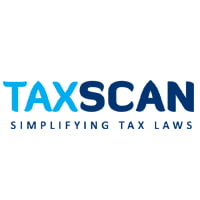ITAT Dismisses Revenue’s Appeals against Civil Contractor as Tax Effect Below ₹60 Lakhs, Grounds Termed “Cryptic and Nebulous” [Read Order]
The Tribunal held that both appeals were liable to be dismissed at the threshold itself, on the ground that the tax effect was below the prescribed limit, and also because the grounds raised by the Revenue were �cryptic and mechanically approved�
![ITAT Dismisses Revenue’s Appeals against Civil Contractor as Tax Effect Below ₹60 Lakhs, Grounds Termed “Cryptic and Nebulous” [Read Order] ITAT Dismisses Revenue’s Appeals against Civil Contractor as Tax Effect Below ₹60 Lakhs, Grounds Termed “Cryptic and Nebulous” [Read Order]](https://www.taxscan.in/wp-content/uploads/2025/05/ITAT-ITAT-Dismisses-Revenues-Appeals-Revenues-Appeals-taxscan.jpg)
The Nagpur Bench of the Income Tax Appellate Tribunal (ITAT) recently dismissed two appeals filed by the Income Tax Officer against the assessee Janardan Shyam Bihari Singh, a civil contractor, for Assessment Years (AYs) 2011–12 and 2014–15. The Tribunal held that the tax effect in both cases was below the monetary limit of ₹60 lakhs as prescribed under CBDT Circular No. 9/2024 and that the grounds raised by the Revenue were too vague to be adjudicated upon.
The assessee, a civil contractor, had not filed his return of income for AY 2011–12 and AY 2014–15 despite having received contract receipts exceeding ₹1.97 crores and TDS deductions under section 194C. The Assessing Officer (AO), invoking section 144 of the Income Tax Act, estimated the income by applying a profit percentage and disallowed certain expenses, thereby adding to the total income.
The assessee preferred appeals before the National Faceless Appeal Centre (NFAC), which partly allowed the appeals and reduced the additions by applying a reasonable net profit rate, acknowledging that some of the expenses were genuine and supported by available evidence.
Aggrieved by the NFAC’s order, the Department filed two appeals before the ITAT, stating that the CIT(A) erred in reducing the addition made by the AO. However, the appeals were found to be deficient in substance, as they contained only three generalised grounds, which were not supported by detailed reasoning or evidence.
Stay Updated with the Latest Audit Report Formats & Audit Trials Requirements!, Click Here
During the hearing, the Departmental Representative (DR) admitted that the tax effect in both appeals was below ₹60 lakhs, the threshold for filing appeals before the ITAT, as per CBDT Circular No. 9/2024 dated 18 March 2024. He, however, requested the bench to consider the appeals on merit, arguing that the deletion of the additions by the NFAC was unjustified.
The Tribunal held that both appeals were liable to be dismissed at the threshold itself, on the ground that the tax effect was below the prescribed limit, and also because the grounds raised by the Revenue were “cryptic and mechanically approved.” The Tribunal further noted that the Revenue failed to point out any specific error or illegality in the NFAC’s order and that such generalised and vague appeals could not be entertained under the law. Relying on judicial precedents and the CBDT’s litigation policy, the Tribunal held that frivolous appeals with low tax effect burden the judicial system and defeat the objective of focused litigation.
The bench comprising Shri V. Durga Rao (Judicial Member) and Shri K. M. Roy (Accountant Member) observed that the Revenue failed to make out any substantial grievance against the relief granted by the Commissioner of Income Tax ( Appeals ) [NFAC] and hence dismissed both appeals in limine. The Bench granted liberty to the Revenue to approach the Tribunal again by filing a Miscellaneous Application if it is found that the tax effect exceeds the prescribed limit or if any exception under the CBDT circular applies.
To Read the full text of the Order CLICK HERE
Support our journalism by subscribing to Taxscan premium. Follow us on Telegram for quick updates
Income Tax Officer vs Janardan Shyam Bihari Singh Ganesh Nagar , 2025 TAXSCAN (ITAT) 938 , ITA no.37 & 40/Nag./2024 , 17 February 2025 , Shri Mahavir Atal , Shri Abhay Y. Marathe

